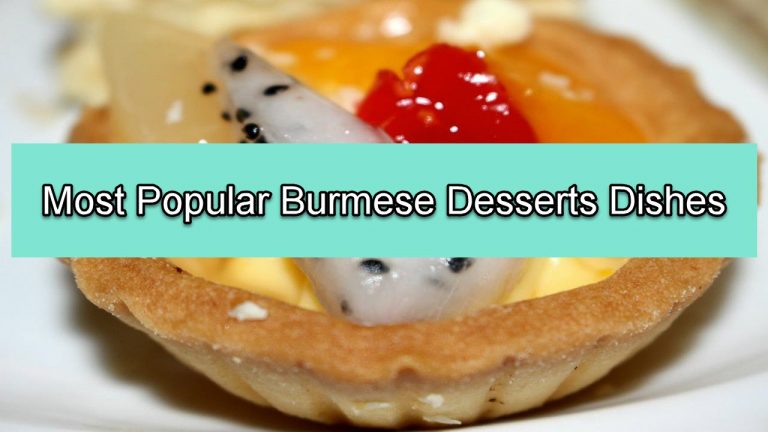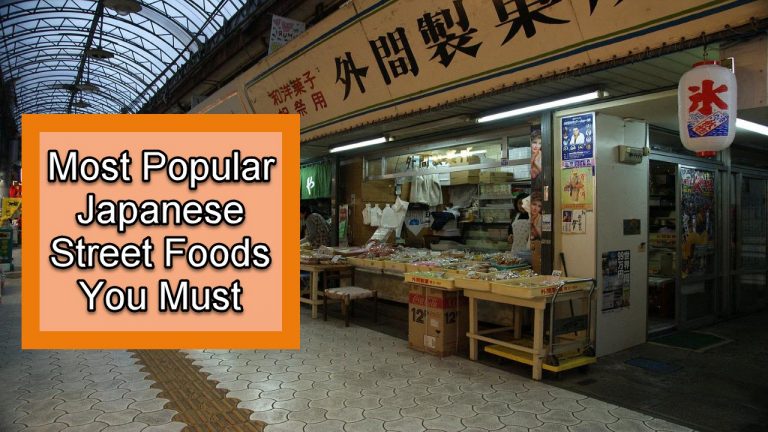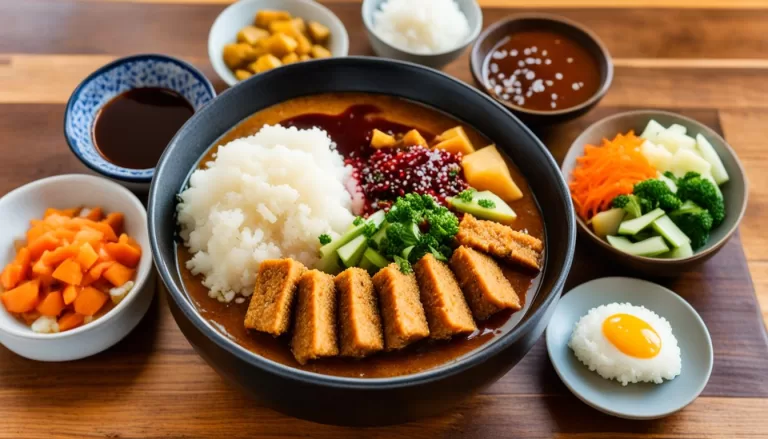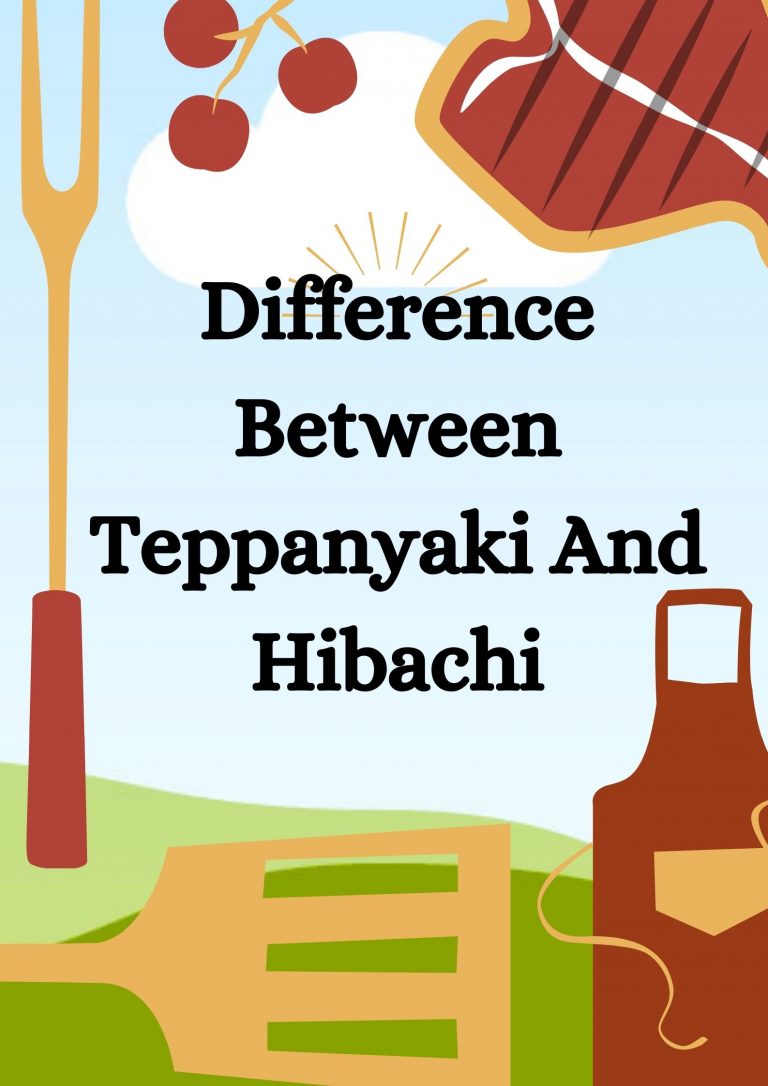18 Different Types Of Mochi With Images

Mochi is a famous Japanese Rice cakes that is made out of Mochigome, a Japonica Polished Glutinous rice that is short grained. Additional ingredients to make Mochi includes water, sugar and cornstarch. There are however different types of mochi. In this post, we will be talking about some of the most popular and famous mochi available.
What is Mochi
Mochi taste is similar to that of rice but with a different consistency: sticky, soft, stretchy and chewy. It is used in different Japanese cuisines. There are different specialty of mochi in other regions in Japan but the a typical Mochi is one that with rice that is stretchy and sticky that was pounded until it gets smooth. Hence, a dough made from the pounded steamed rice.
Different Types Of Mochi
There are different types of mochi and each type are added to dishes and cuisines. Most of the time, Mochi is used in wagashi, a Japanese sweets and used in other Japanese dishes as well.
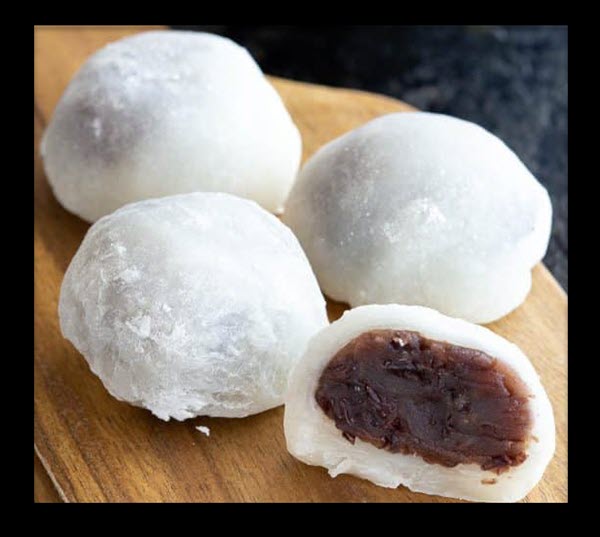
Daifuku
Daifuku is a type of mochi that is soft, big in size and round. These are soft round mochi stuffed. There are however different ways on how Daifuku is served but most of Daifuku Mochi is served filled with Anko which is a sweetened bean paste then topped with whole strawberry fruit.
There are other Daifuku variations wherein strawberries are used to fill rather than the sweet paste. And some are filled with whipped cream. Ichigo is one popular variety of Daifuku.
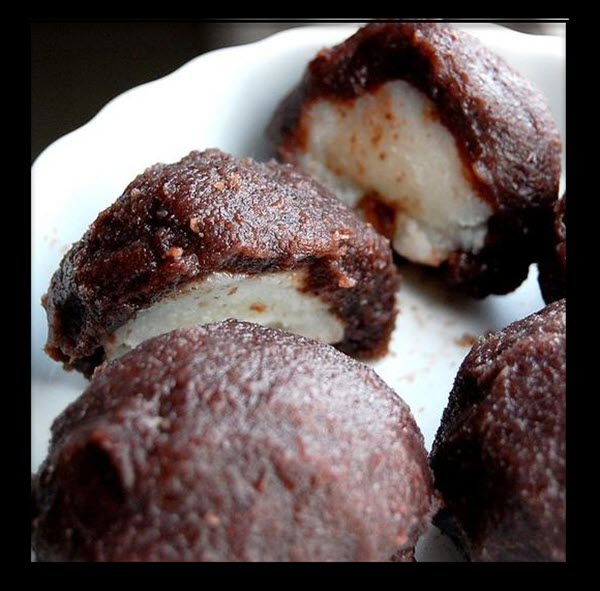
Bota Mochi
Bota Mochi is similar to Daifuku but the reversed kind. While a Daifuku Mochi is filled with the ingredients such as sweetened red bean paste or Azuki beans , with Bota Mochi the red bean paste is filled with the mochi. To simplify, Bota Mochi is covered with red bean paste.
There are two varieties of ingredients used to cover the mochi: Koshian which is a smooth red bean paste and the Tsubuan which is a chunky sweet red bean paste.
Ohagi, is another Bota Mochi variation that has a different texture.

Kinako Mochi
A classic version of Mochi variety. It is also known as Abekawa Mochi.
It is made by combining the rice cake (made from glutinous rice) and Kinako which is a soybean powder that is roasted. This will give your Mochi a nutty flavor.
Kinako Mochi can either be boiled or can be toasted. Make sure to dip the mochi in water so that the sugar and powder that will be dusted later on will stick to it.

Kiri Mochi
Kiri Mochi is another type of mochi that can easily be identified because these are dried mochi that are shaped and cut into rectangular shape. The drying process helps mochi retains its freshness even for longer period of time, just make sure to place mochi rectangles in room temperature.
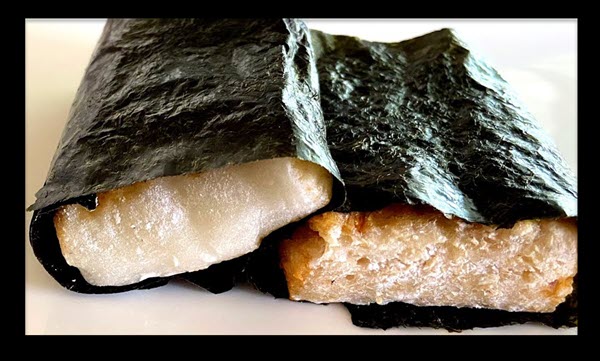
Isobe Maki
Isobe Maki or also known as Isobe Yaki. It is another type of Mochi that are individually cut into rectangles. Each piece are grilled then wrapped with Nori sheet (seaweed) and then you can dip it in soy sauce.
A favorite all time snack that is best served with the classic mochi.
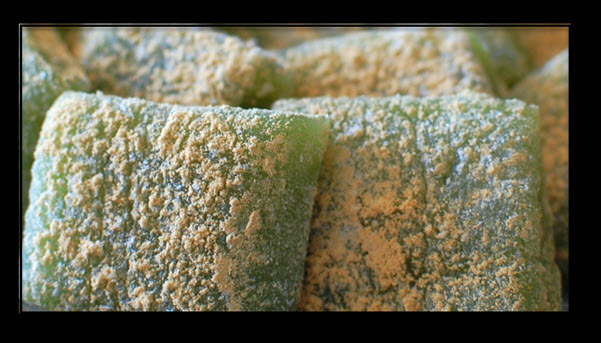
Kusa Mochi
Kusa Mochi is also called Yomogi Mochi or also known as Grass Mochi or Japanese Mugwort, appears to have a wild green appearance.
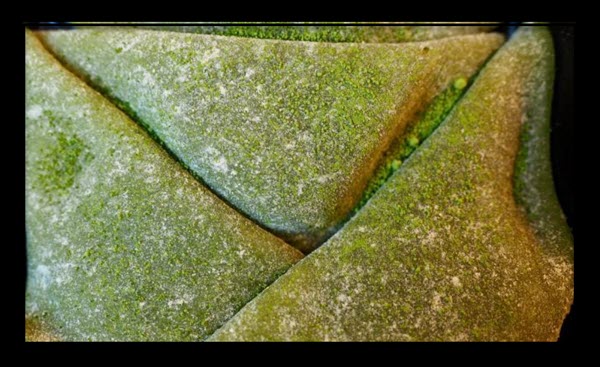
Yatsuhashi
Another mochi variety that is triangular shaped and flat mochi. A traditional Japanese mochi snack that are baked. Yatsuhashi can be filled with different filling though Cinnamon is the most common fillings with Yatsuhashi Mochi however Cinnamon is not a very popular ingredient Japanese dishes. Red Bean paste as fillings can be used instead.

Hanabira Mochi
A uniquely shaped type of Mochi variety. Hanabira Mochi is a thin layer of white mochi filled with red bean paste and burdock root filling. Since it is translucent, a shade of pink color can be seen.
It is shaped as flower petal mochi and consists of round and rolled rice cakes that is folded around the bean paste.
Hanabira which means flower petal, hence the name of this mochi Hanabira Mochi wherein it is shaped as a flower petal.

Sakura Mochi
Sakura Mochi is usually served during Spring and festivals such as Cherry Blossoms festival. The pink colored sakura mochi has a combination taste of sweet and salty with a hind of bitter.
This type of Mochi is wrapped in pickled Sakura leaf that is edible as well. Sakura mochi are filled with Anko (red bean paste).
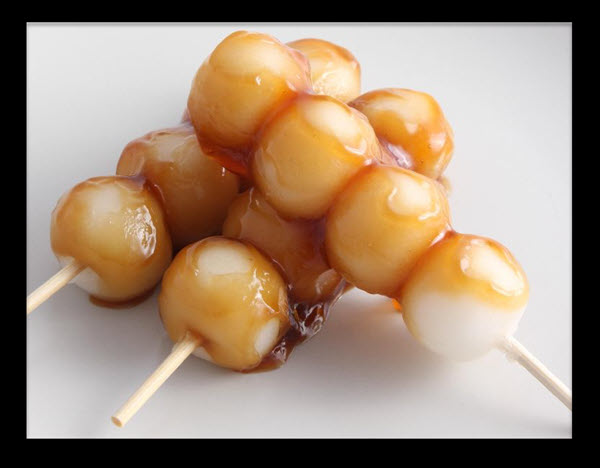
Dango
Dango is not actually a variety of Mochi but can still fall under the same category as that of a Mochi since it is made of rice flour instead of using rice.
There are different variations of Dango but the most common ones are those that are placed on a stick. In a single stick, there can be at least 3 or 5 rice balls.
Dangos are toasted Mochiko balls. Different toppings can be used such as black sesame seeds or the common topping as bean paste.
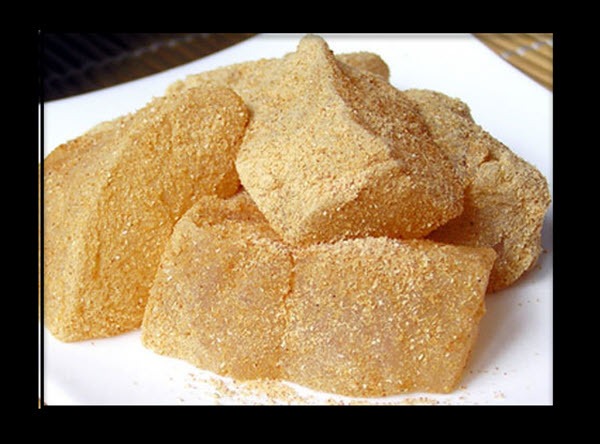
Warabi Mochi
Warabi Mochi is a traditional mochi of the Japanese. It is made using bracken starch instead of using rice powder making it softer and appears to have a jelly like texture than other mochi varieties.
Warabi Mochi is rolled into Kinako, a soybean powder or sprinkled with Kuromitsu which is a black sugar syrup.
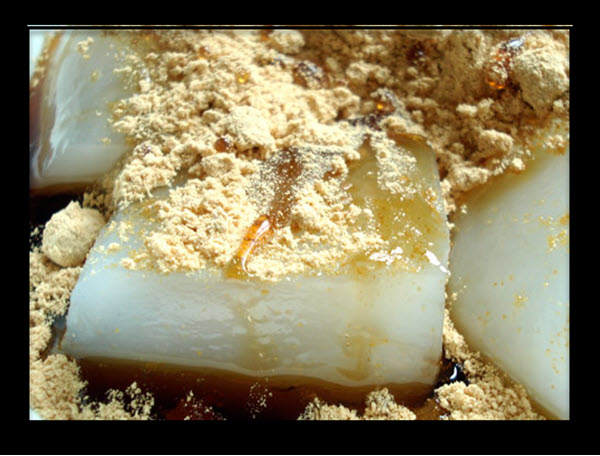
Kuzu Mochi
Kuzu Mochi is made with starchy Kuzuko Powder, an unprocessed powder that comes from Kuzu Plant. It is often used as a thickening agent especially in Japanese dishes.
Kuzu Mochi has a gelatin texture and a mild flavor. It is best served as chilled and can either be roasted with soybean powder and drizzled with brown sugar syrup.
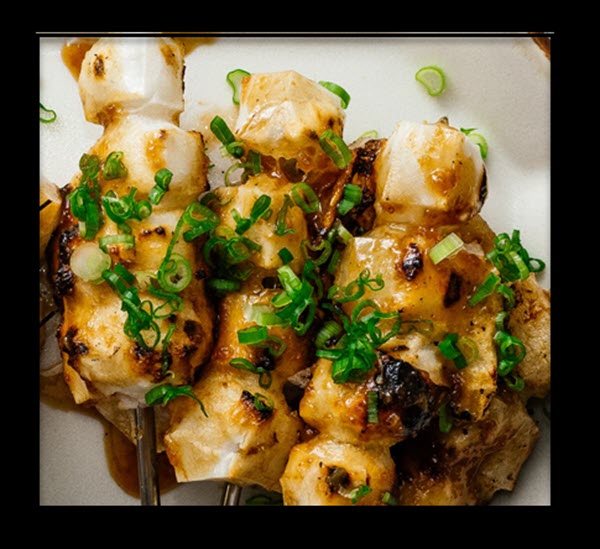
Yaki Mochi
Yaki Mochi is a type of mochi that can either be broiled, grilled or pounded. The common Yaki Mochi variety is often placed on a stick (at least 3 balls of Mochi) and are then toasted on a charcoal grill but nowadays, gas grill as mostly used.
It is traditionally eaten during winter, and eaten as Yaki Dango.
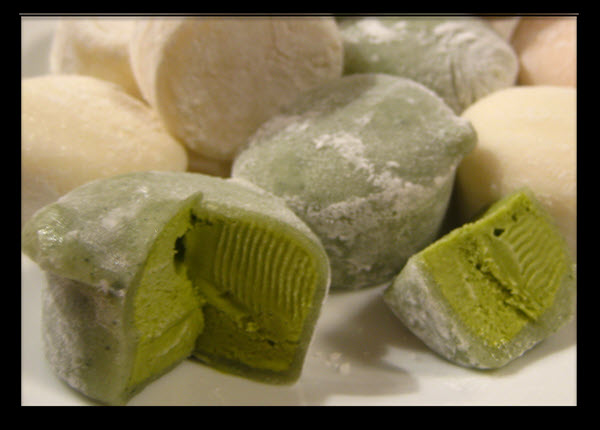
Mochi Ice Cream
Mochi Ice Cream is a unique kind of Mochi. Way back 1993, Frances Hashimoto started to place at least 7 flavors of ice cream in a small layer with sweet mochi. Since it can be very difficult to achieve and maintain the texture due to temperature, it took awhile before it gained its popularity and was able to mass produced this variety.
The Ice Cream is the most popular Japanese dessert not only in Japan but in other countries as well. Other countries also uses different flavors of their own Mochi ice cream.
Other Ice cream flavors of Mochi includes black sesame, red bean, plum wine and mango flavors.
Similar to Daifuku, Mochi ice cream contains ice cream fillings instead of the traditional and common filling of using bean paste.
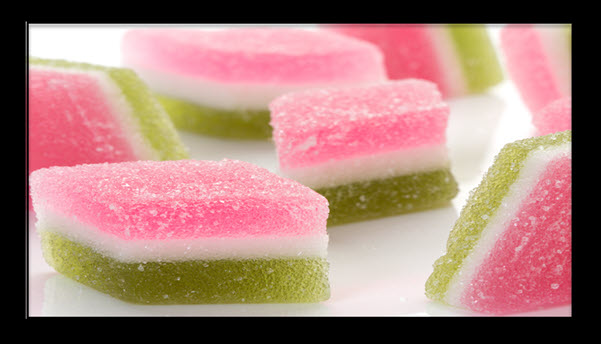
Hishi Mochi
Hishi means Diamond, hence Hishi Mochi is a diamond-shaped mochi variety that is made using glutinous mochi as base.
Generally consists of 3 layers:
- first layer: Jasmine flavored (pink layer)
- Second layer: Plain White layer (with water chestnut)
- Third layer: (bottom layer) Green flavored with Mugwort layer.
Hishi Mochi is another traditional mochi that is eaten during festival, Girl’s Day festival in particular that is usually held on March 3. The Festival is a celebration of good health and success of young girls.
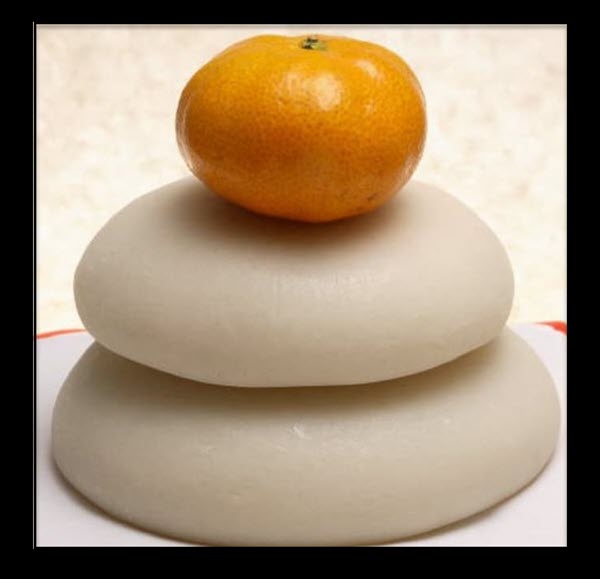
Kagami Mochi
Kagami Mochi consists of two Mochi cakes placed on top of one another, though the other one is made to be larger than the other mochi. Also, to finish Kagami Mochi a small mandarin fruit is placed at the top portion.
It usually takes after the shaped of a mirror, where Kagami means mirror.
Kagami Biraki is a festival that often means mirror opening. Therefore, Kagami Mochi is usually eaten during the celebration of these festivals. The stacking of Kagami Mochi is believed to bring about double fortune.
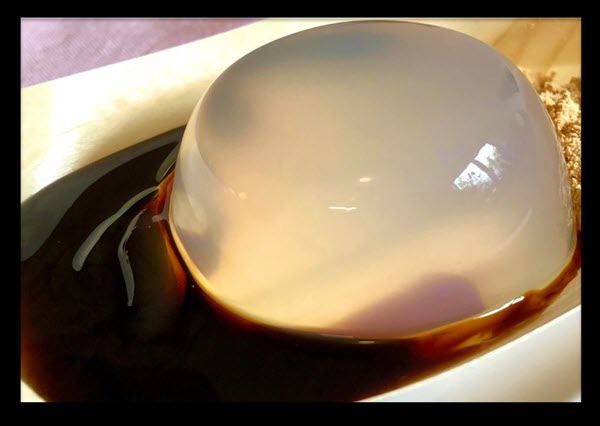
Mizu Shingen Mochi
Mizu Shingen Mochi is another mochi variety that is also known for as Raindrop cake. It is slightly different from other Mochi variations.
It is generally made using agar-agar powder and then sprayed with Kutomitsu and Kinako powder for that nutty flavor.
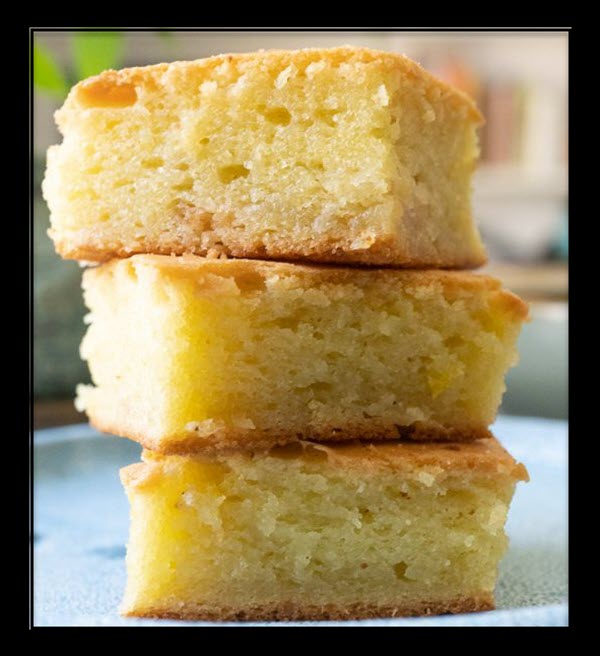
Mochi Cake
Mochi Cake is a new variation of Mochi where glutinous rice flour is used for that chewy texture of the cake. The rice cake is steamed, after which it is pounded and mashed. Then formed into small round buns that will either be boiled or baked.
Mochi rice cake is similar to that of chiffon cake, however this one is less sticky.
How to Make Mochi?
As mentioned, Mochi is made using glutinous short grain rice which is called Mochigome. It has a chewy texture as compared to regular rice. Traditionally, a mortar and a mallet is used to make mochi.
Here are the steps to make Mochi:
- Soak Mochigome in water overnight
- Steam Mochigome rice
- Pound and Mashed the rice to make it into a soft sticky rice
The pounding of the Glutinous rice is referred to as Mochitsuki.
Usually, there are two individuals involved when making Mochi. The first person will pound the mochi while the other one will turn the mochi over and will add the water. The water is used to achieve the perfect texture and consistency of Mochi.
Although nowadays there are machines available that will make mochi easier and faster.
FAQs
You can enjoy eating Mochi ice cream that same way how you eat other ice cream varieties. There is no specific steps or process on how to eat it, just eat it however you like.
Yes, there are other Mochi variations that are non-dairy and vegans, usually made using cashew cream.
Before you serve mochi, allow it to sit at room temperature for about 10 minutes in order to achieve its chewy and soft texture.
In Japan, Mochi is also called rice cake. Typically, a small sized buns made out of glutinous rice. Hence, it is called rice cake.
Conclusion
There are many different variations of Mochi and each of these variations differs in the how they are prepared, the ingredients used and how each are eaten. Although most of these types of Mochi have similar ingredients used such as the glutinous rice grains, and fillings such red beans for red bean paste.
We hope that this guide has helped you understand and learn more about the different types of Mochi available that suits your taste best.
Have you already chosen your favorite Mochi from the lists mentioned in this article? Let us know what you think.
